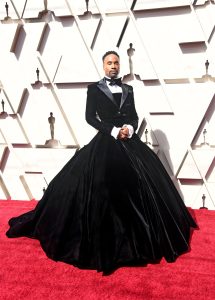
A person holds a smartphone as TikTok logo is displayed behind their silhouette. Source Reuters.com
TikTok (once the home to lip-syncing and musical.ly challenges) has become a dominant social force that dictates the latest trends and facilitates societal norms for Millenials and Gen Z. This change was brought about during Covid-19 quarantine. Sitting at home and not being able to interact with, well anybody, left society depending on social media like never before. During quarantine, the dormant state of society provided time and space for individuals to explore and express their identities without the harsh constant eye of society. Individuals turned to TikTok to share their newfound identity expressions, thus creating a collective community of queer exploration.
As quarantine got longer, and people kept protesting masks, people had more time to interpret and change the codes of previous gender norms and share their knowledge. People watched hours of TikToks including constantly (subconsciously) absorbing gender codes around them. Gender is created through a series of codes enacted by how we dress, talk, gesture, and all aspects of our identity reflect gender somehow. As Judith Butler would say ‘Gender is always active,’ one cannot escape or dismantle gender. Since gender is always active, then as individuals we are constantly producing and generating the idea of gender. Gender moves through us when we start talking, dressing, moving about, and reinforcing codes of gender. So when new vocabularies of gender were being formed and shared on social media, gender started to become a collective experience.
TikTok is life-changing in many ways (exhibit A: taking a 16-year-old dancer and making them a soon-to-be millionaire) but over quarantine, TikTok allowed for millions of homebodies to enact gender at a societal level. A brand new gender cannot just be formed out of thin air. Instead, new meanings are given to gender using vocabulary that already exists. So when people on TikTok saw different forms of gender being repeated, they were able to not only create their own expressions as an individual but also share and learn as a society. It is hard to ultimately say if gender is enacted by an individual or together in society. However, the conclusion that can be made is that with social media platforms like TikTok giving access to an exploration of ideas and norms at a global level then gender will change in an individual because of the society living at our fingertips.

TikTok still image of Alex Renee (@stapleyourmouthshut) saying things they get asked as a Gender Fluid person. Source @stapleyourmouthshut TikTok page.



